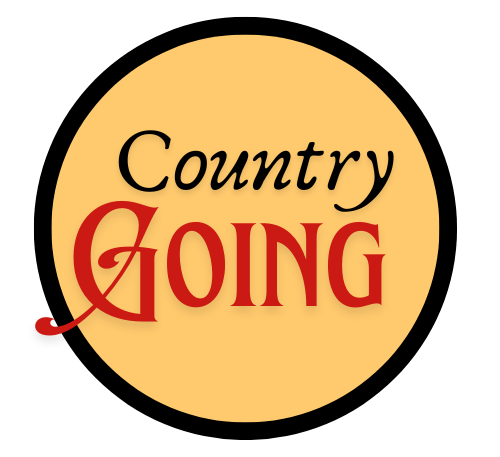Country music, deeply rooted in American culture, has flourished into a multifaceted genre over the years. From the twangy sounds of classic country to the contemporary beats of modern country, the genre offers something for everyone. Each subgenre brings its unique flair, storytelling style, and musical elements, making country music a vibrant tapestry of sounds.

For newcomers and long-time fans alike, understanding the various country music subgenres can greatly enhance their listening experience. Whether it’s the soulful tunes of Americana, the high-energy rhythms of honky-tonk, or the bittersweet ballads of bluegrass, there’s a rich diversity waiting to be explored.
To help navigate this musical landscape, this guide dives into the main subgenres, shedding light on their characteristics, origins, and standout artists. This journey through country music’s evolution promises to deepen your appreciation and perhaps even introduce you to a new favorite style. Dive in and discover the heart and soul of country music through its many distinct subgenres.
Origins and Evolution of Country Music
Country music has a rich history that spans from the early 20th century to the present day. Its origins are deeply rooted in Appalachian folk and Western styles, and it has evolved through various phases including honky-tonk, the Nashville Sound, and the Outlaw Movement.
The Roots of Country: Appalachian and Western Styles
Country music began to take shape in the early 1900s, drawing heavily from Appalachian folk music. This style was characterized by its use of fiddle, banjo, and acoustic guitar. Rural communities used music to tell stories and preserve their heritage.
At the same time, Western music was developing in the American Southwest. Featuring cowboy songs and ballads, this style emphasized life in the open range. Both Appalachian and Western styles laid the foundation for modern country music, introducing key elements such as storytelling and acoustic instrumentation.
The Golden Age: From Honky-Tonk to Nashville Sound
The 1940s and 1950s marked a significant period known as the Golden Age of country music. Honky-tonk emerged during this time, characterized by its raw, emotional lyrics and simple musical arrangements. Artists like Hank Williams and Ernest Tubb became crucial figures.
By the late 1950s and 1960s, the Nashville Sound transformed country music into a more polished, radio-friendly genre. Producers like Chet Atkins added string sections and background vocals to create a smoother, more sophisticated sound. This era saw artists like Patsy Cline and Jim Reeves gaining immense popularity.
Outlaw Movement and Progressive Country Evolution
In the 1970s, the Outlaw Movement emerged as a reaction to the polished Nashville Sound. Artists like Willie Nelson and Waylon Jennings sought creative freedom and returned to a more raw, authentic sound. They focused on storytelling and personal expression, resonating with a broader audience.
Simultaneously, progressive country started to evolve. This subgenre blended country with rock, folk, and even jazz elements. Artists like Emmylou Harris and Gram Parsons experimented with new sounds, creating a diverse and evolving music landscape. This period of innovation and rebellion laid the groundwork for contemporary country music.
Popular Country Music Subgenres
Country music encompasses a wide variety of subgenres, each offering its own unique style and flavor. From the roots of traditional country and bluegrass to the modern fusion of country rap, fans can explore a rich and diverse musical landscape.
Traditional Country and Bluegrass
Traditional country and bluegrass stand as the foundational pillars of country music. Traditional country emphasizes storytelling, simple chord progressions, and instruments like the fiddle and acoustic guitar. Artists like Hank Williams and Patsy Cline are iconic figures in this subgenre.
Bluegrass, on the other hand, is distinguished by its fast tempos and virtuosic instrumentation, particularly on the banjo, mandolin, and fiddle. Bill Monroe is often cited as the father of bluegrass, influencing countless musicians. Both genres continue to enjoy popularity, preserving the old-time sound while inspiring new generations.
Country Rock and Pop Country
Country rock blends the lyrical storytelling of country with the energy and instrumentation of rock music. Emerging in the late 1960s and early 1970s, this subgenre features artists like The Eagles and Lynyrd Skynyrd. The electric guitar and strong rhythms are central components.
Pop country is a more modern evolution, incorporating elements of pop music. Catchy hooks, polished production, and a pop sensibility make this subgenre widely accessible. Shania Twain and Taylor Swift have been pivotal in bringing pop country to mainstream audiences. Both subgenres successfully bridge the gap between country and other musical styles.
Americana and Alt-Country
Americana and alt-country offer more eclectic and experimental takes on traditional country themes. Americana draws from roots music, folk, and blues, creating a rich tapestry of sounds. Artists like Emmylou Harris and The Band exemplify this blending of genres.
Alt-country, short for alternative country, tends to push boundaries with its diverse influences, including punk and rock. Bands such as Uncle Tupelo and The Jayhawks are notable for their raw, honest lyrics and unorthodox approaches. These subgenres appeal to listeners looking for depth and variety beyond mainstream country.
Texas Country and Red Dirt
Texas country and red dirt both originated in the southwestern United States, offering a grittier, more independent sound. Texas country artists like Pat Green and Robert Earl Keen focus on storytelling and a more rugged musical style, often performed live in local venues.
Red dirt music, named after the soil in Oklahoma, blends country, rock, and folk styles. It is characterized by its grassroots approach and DIY ethic. Bands such as Cross Canadian Ragweed and Jason Boland & The Stragglers have significantly contributed to the red dirt movement. Both subgenres are celebrated for their authenticity and regional pride.
Bro-Country and Country Rap
Bro-country and country rap represent the most contemporary and mainstream trends in country music. Bro-country emphasizes party anthems, trucks, and good times, with artists like Florida Georgia Line and Luke Bryan leading the charge. Its upbeat sound and catchy lyrics make it popular among younger audiences.
Country rap, also known as hick-hop, fuses country themes with hip-hop beats and rhymes. Artists like Cowboy Troy and Big Smo are pioneers in blending these diverse elements. Both subgenres reflect the evolving nature of country music, showcasing its ability to adapt and innovate.
